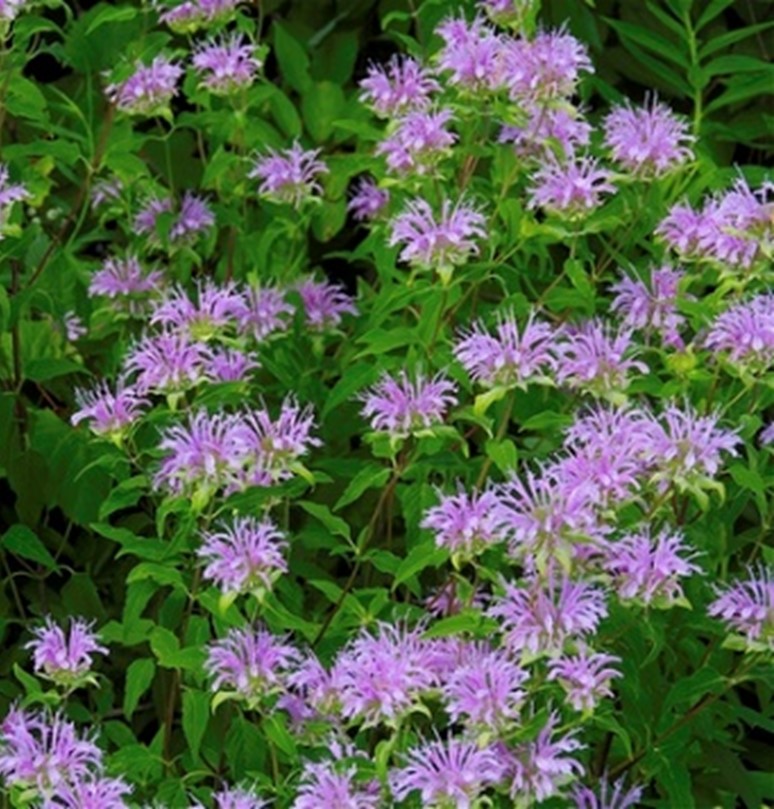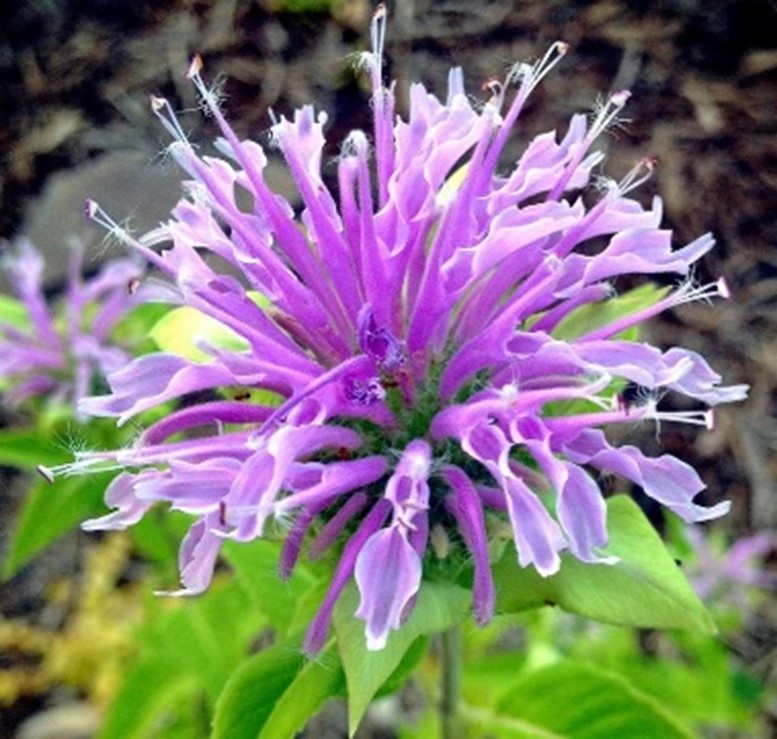Bee Balm or Wild Bergamot
Monarda fistulosa



Characteristics
- Type: Perennial
- Zone: 3 – 9
- Height: 2 – 4 Feet
- Spread: 2 – 3 Feet
- Bloom Time: May – September
- Bloom Description: Pink/Lavender
- Sun: Full Sun – Part Shade
- Water: Dry – Medium
- Maintenance: Medium
- Suggested Use: Herb, Naturalize, Rain Garden
- Flower: Showy, Fragrant, Good Cut, Good Dried
- Leaf: Fragrant
- Attracts: Bees, Birds, Butterflies, Hummingbirds
- Tolerates: Deer, Drought, Clay Soil, Dry Soil, Shallow-Rocky Soil, Black Walnut
- Texas Native
Culture
Bee Balm or Wild Bergamot is best grown in dry to medium moisture, well-drained soils in full sun to part shade. Tolerates somewhat poor soils and some drought. Plants need good air circulation. Deadhead flowers to prolong summer bloom. Bee Balm or Wild Bergamot tends to self-seed.
Noteworthy Characteristics
Monarda fistulosa, commonly called bee balm or wild bergamot, is a common Texas native perennial which occurs statewide in dryish soils on prairies, dry rocky woods and glade margins, unplanted fields and along roads and railroads. A clump-forming, mint family member that grows typically to 2-4′ tall. Lavender, two-lipped, tubular flowers appear in dense, globular, solitary, terminal heads atop square stems. Each flower head is subtended by (rests upon) a whorl of showy, pinkish, leafy bracts. Flowers are attractive to bees and butterflies. The toothed, aromatic, oblong, grayish-green leaves (to 4″) may be used in teas. Long summer bloom period.
Problems
Powdery mildew can be a significant problem with the monardas, particularly in crowded gardens with poor air circulation. This species has good mildew resistance, however. Rust can also be a problem.
Garden Uses
Provides color and contrast for the herb garden, wild garden, native plant garden, meadow or naturalized area. May be used in the perennial border, but is simply a less colorful selection than the similar-in-appearance Monarda didyma and its many cultivars (the beebalms).
Courtesy of Missouri Botanical Society Plant Finder